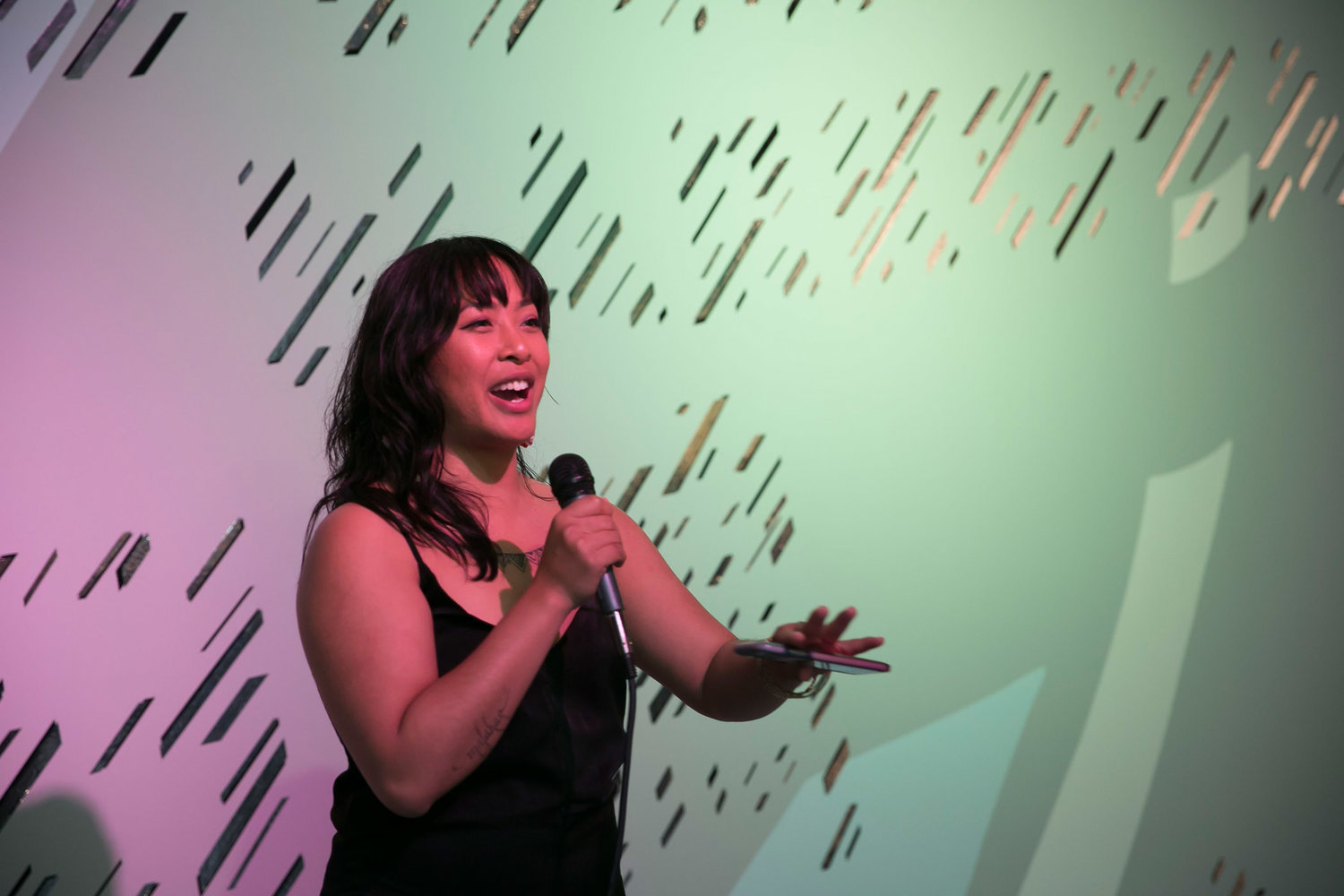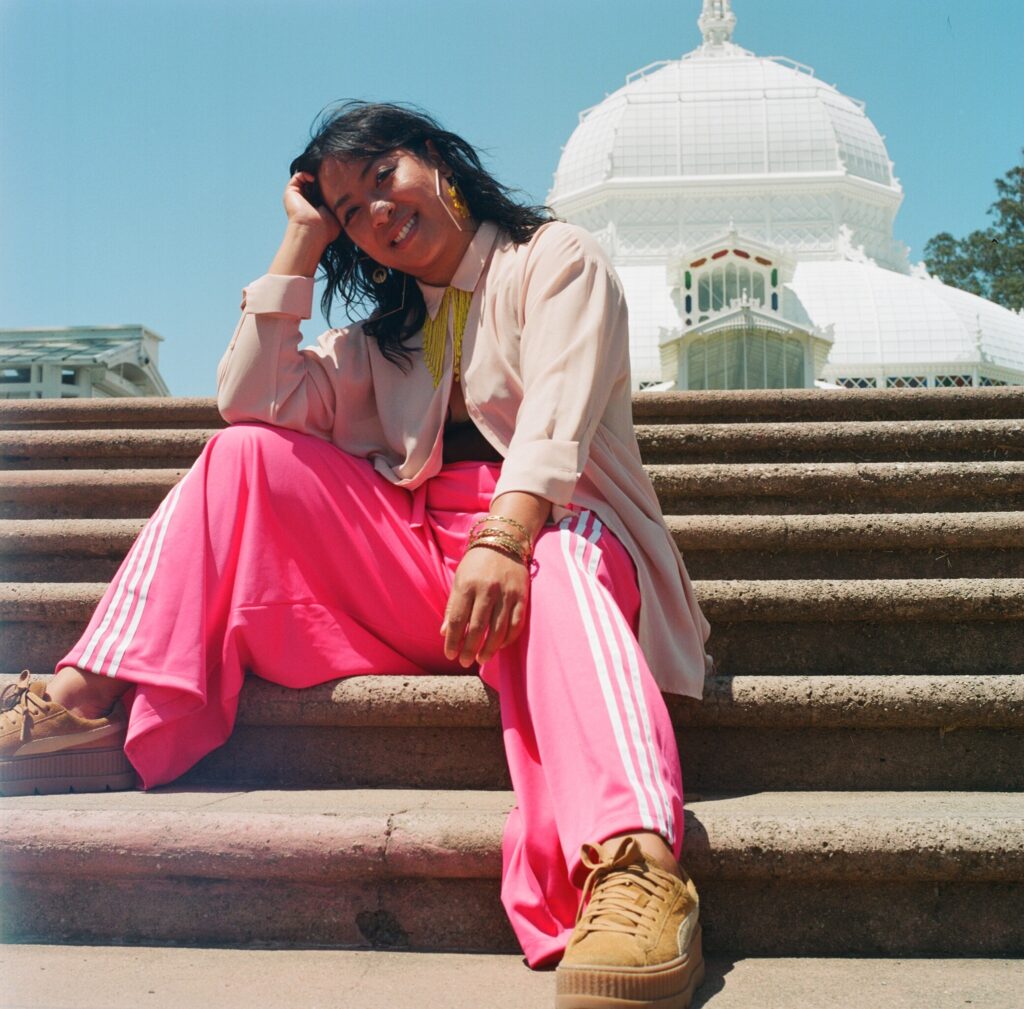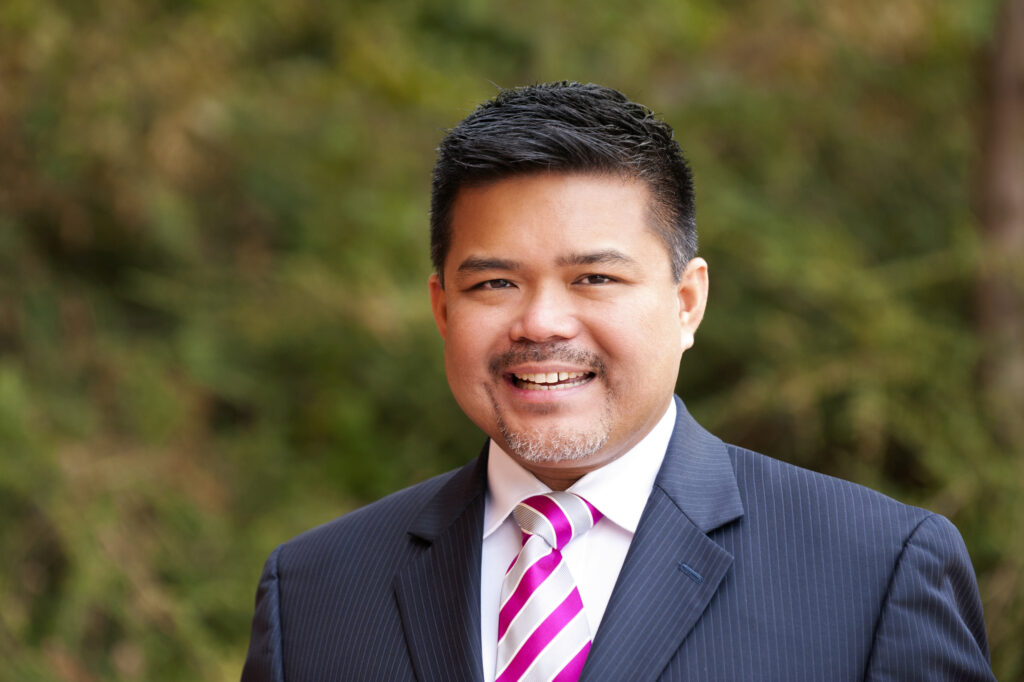Artist, educator, community and cultural worker, and curator: Kimberley Acebo Arteche identifies themself with all of these labels. But their path as an artist was a considerable diversion from their original plan to enter the field of medicine.
“I come from a Filipino family and the expectation is always that the children either become nurses, doctors, or pharmacists,” says Arteche ’11, visual arts. Their mother worked at Howard University Hospital, mostly with other Filipino nurses, and Arteche’s high grades in science pushed them in that direction.
It was at UMBC that Arteche, now the co-director of the Berkeley Art Center, decided to delve into other ways of exploring their identity and visibility. Joining the Filipino American Student Association freshman year was one step, another was their role as a founding member of the campus hip-hop dance group Major Definition.“I did struggle a little bit trying to navigate what my identity was as an autonomous person outside of my parents home. I started dancing and that led me into a few years of training with a dance company in DC called Culture Shock,” they say.
This exposure to folks pursuing arts pushed Arteche to switch majors and they began their journey down a new path: photography—finishing a visual arts major in only a year and a half.
Independent study
Coincidentally, Arteche’s graduation in 2011 was the same year UMBC established the Asian studies program. It felt like such bad timing, Arteche remembers. “I’ve had been looking for this kind of education in this kind of history for so long!’” they say. Arteche even emailed American Studies Professor Theodore S. Gonzalves to ask if she should try to get a second degree at UMBC, this time in Asian studies. He offered to meet with her regularly instead.
Gonzalves, currently the interim director of the Smithsonian Asian Pacific American Center, introduced Arteche to Filipino American literature and had them read America Is in the Heart, a book by Carlos Bulosan about the struggles of Filipino migrant laborers in the 1930s and 1940s. Gonzalves and Arteche also discussed Carlos Villa, an artist, educator, and community arts organizer and the first person in the United States to teach a Filipino American arts course.
From these conversations, Arteche situated themself in the greater historical and colonialist context of America. “What came out of that was me finally realizing that, although my family had just immigrated to the U.S., my history here in the United States is so much longer,” they say.
Rethinking the gallery
After getting their M.F.A at San Francisco State, Arteche teaches there while also working at the Berkeley Art Center, and pursuing their own art. “For me, all of that informs each other. I’m teaching two classes now [and] one of them is the intermediate darkroom class. My focus is also on decolonizing photography, because our history of photography, in the European American Western canon, is about documenting indigenous peoples and like using that as a tool for colonialism.”
While at the Berkeley Art Center, Arteche aims to break down ideas of art being within the “white cube gallery with crisp white walls.” One of their art exhibitions is Bodyless, which features colorful and bright dusters suspended in spaces as if being worn, but, as expected by the title: without a body inside the dress.
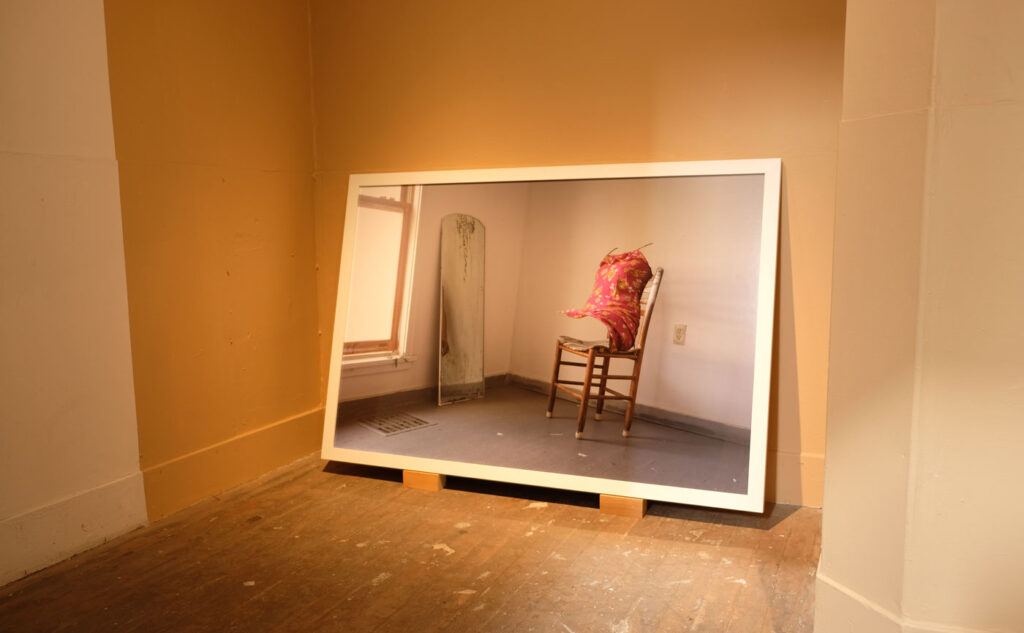
Dusters, Arteche says, are very significant to their community. “They’re the dresses that you wear at home. A lot of times your grandma doesn’t even wear underwear underneath the dresses, because they’re at home, they’re doing physical domestic care work,” Arteche says. As the only one pursuing arts in their family, and a self proclaimed black sheep, Arteche has been digging into family history to understand oral histories and experiences.
They collected dusters from their own family members and created Bodyless, the experience of being seen as a body in space but not being seen as a full human. “You see the outline of a body. That also is very similar for me, as a person of color in art spaces. When I got out of grad school, so much of me being affiliated with white art spaces was so that I could check off these diversity boxes.”
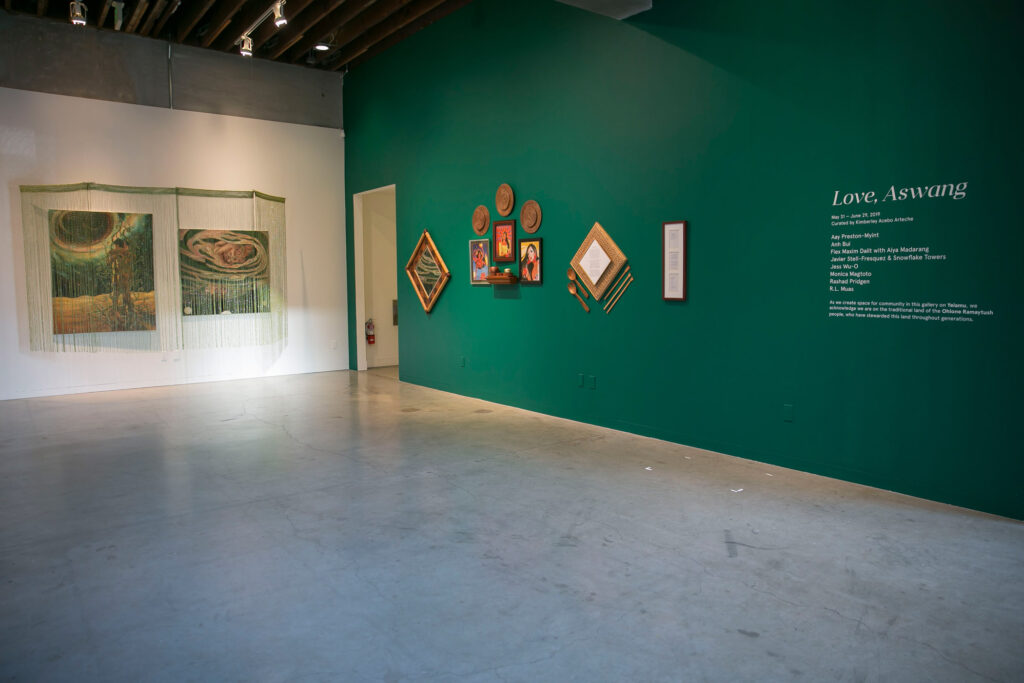
They noted that they value being conscious about equity within art spaces. “[With] my role at Berkeley Art Center, we have been very conscious to not underpay artists. [I try to be] very intentional, like in all of the layers of all the work that I do, to make sure that each decision we make also sets people up to be well and be healthy.”
Reclaiming our bodies
Most recently, the San Francisco Arts Commission awarded Arteche funding for their work, an upcoming project called Kundiman ng Katawan. “It touches on these really tense political histories in the Philippines like the [Ferdinand] Marcos dictatorship, and also just how colonialism has compromised our relationship to our bodies, and how we feel like success and wealth and freedom is tied to how much money we can make and that also kind of puts our bodies at this way where it’s really just a tool for capitalism. I’m unpacking all of those things in this project that’s going to premiere next year,” they say.
As for their future, they hope to move towards taking on larger art commissions, and having their work acquired by museum collections. “Artistically, my goal is to make art that makes folks question their relationship to culture and question their relationship to history, in whatever that means for them,” Arteche says.
— Anjali DasSarma ‘21
*****
Header image: Arteche at a speaking engagement. Photo by Minoosh Zomordinia, courtesy of Arteche.
Tags: AsianStudies, CAHSS, Fall 2021, FASA, FilipinoAmericanStudentAssociation, MajorDefinition

